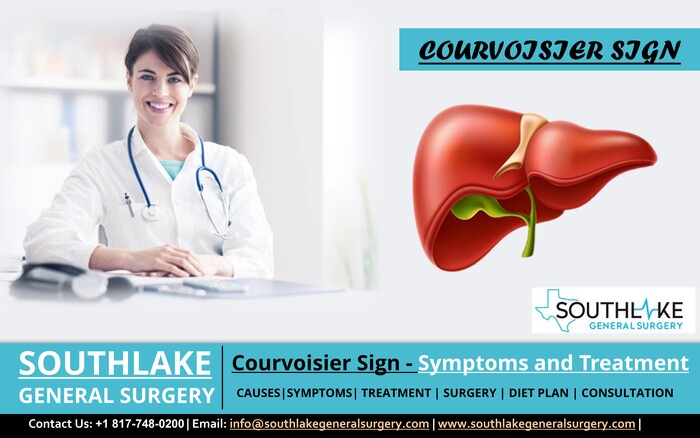Gallbladder enlargement owing to bile build-up is known as the Courvoisier sign or Courvoisier’s law. It’s common in these cases to be able to view or feel the gallbladder through the skin.
The gallbladder is responsible for the discharge of bile into the digestive tract. This makes it easier for your body to metabolize fats. If there is a disruption in the production of bile, this might cause your gallbladder to become enlarged as it fills with bile.
Symptoms of Courvoisier Sign
The most notable symptom of the Courvoisier sign is a gallbladder that has become enlarged to the point where it is palpable through the skin. Most of the time, there will be no discomfort or pain associated with it.
There is also a possibility that you will experience signs of jaundice, which manifest as yellowing of your skin or eyes. Although it may look concerning, this is really a rather frequent sign of a variety of gallbladder disorders, so there is no need to be overly alarmed by it.
Causes of Courvoisier Sign
The Courvoisier sign is caused when there is a blockage in the bile duct, which is responsible for transporting bile from the gallbladder to the small intestine.
A bile duct obstruction can be caused by a benign or malignant tumor. You should know that the Courvoisier sign is not caused by gallstones because gallbladders get smaller when you have gallstones.
Diagnosis of Courvoisier Sign
The first thing your doctor will do is feel around in your stomach to look for the Courvoisier sign. Even in the absence of other symptoms, such as jaundice, doctors will almost certainly perform some extra testing if they are able to feel your gallbladder.
Your doctor may prescribe the following tests:
- CT scan: Here, your gallbladder and its surrounding tissues are seen in cross-section thanks to X-rays taken at different angles.
- MRI: This method generates pictures of the gallbladder and bile duct from the inside using magnets and radio waves.
- Ultrasound: Your doctor will be able to see exactly what is blocking your bile duct thanks to these real-time photos of the gallbladder and nearby tissues.
Treatment of Courvoisier Sign
According to Dr. Valeria Simone MD, an experienced general surgeon at Southlake General Surgery, Texas, there’s no need to do anything special for the Courvoisier’s sign. Courvoisier’s sign treatment is condition specific.
If a benign tumor is the cause of the blockage, surgery can remove it and restore normal bile flow. In case, the growth turns out to be cancerous, it will be removed by your doctor to prevent the spread of cancer.
If you have a tumor or a malfunctioning gallbladder, your surgeon may be able to remove it by laparoscopic surgery. Your doctor’s procedure to accomplish this will involve him or her doing the following:
- inject general anesthesia
- make small incisions in the abdomen
- to remove tissue or separate the gallbladder from the liver and intestine, your doctor will insert the laparoscope and other surgical tools through the incisions
- once the gallbladder is removed, the surgeon closes the incisions with sutures
In cases when cancer has gone beyond the gallbladder, a stent (a tiny tube) may be inserted into the bile duct to keep the bile duct open and allow bile to flow out of the gallbladder. This may be done in conjunction with other therapies that are intended to halt the progression of cancer, such as chemotherapy or radiation therapy, to eradicate cancer cells in their early stages.
Takeaway
The Courvoisier sign was a common diagnostic tool for eliminating the possibility of gallstones among medical professionals. If you can feel your gallbladder through your skin, but you are not experiencing a great deal of pain, it is possible that something is blocking your bile duct. Most obstructions are amenable to removal with the use of minimally invasive surgical techniques.
Appointment
For more information on Courvoisier Sign, Gallstones, Gallbladder Removal Surgery, or consultation with Dr. Valeria Simone MD, at Southlake General Surgery Texas, you can contact our healthcare expert today to book an appointment at +1(817) 748-0200.

